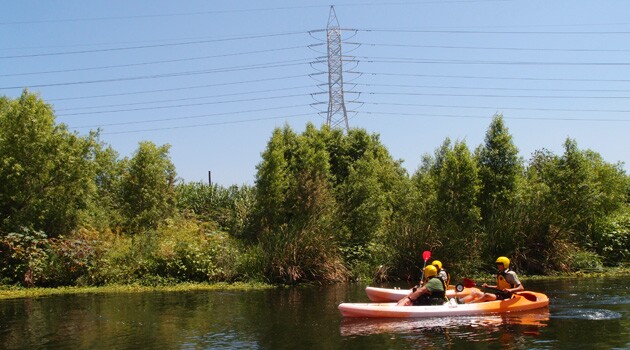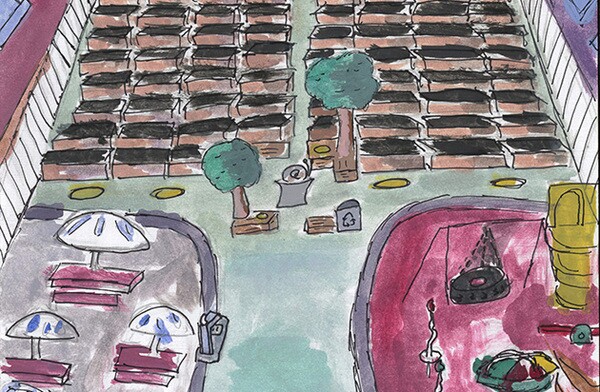Goal 2: Enliven the Riverfront Open-Space Experience

Enhance existing and plan new open spaces surrounding the River with visible linkages to a riverfront network.
Public spaces, occasionally open and/or green spaces, are reflections of the community and provide residents and visitors common ground to express themselves. As such, public spaces should be designed to support and enhance the communities that surround them. The River provides a public space network that serves as open space such as the riverbed and its edges. There are also places along the River that are green spaces, such as Marsh Street Park in Elysian Valley and Humboldt Park in Lincoln Heights.
Within the Study Area, there is also a mix of community types including residential, industrial, and commercial uses. The needs from these communities range from educational and cultural experiences for residents to economic sustainability and community branding for businesses.
Successful improvements of the waterfront open-space experience involves creating and programming spaces for all users.
It also requires a distinction between the type of public space and its programming. The following objectives provide for diversity while fostering compatibility between these community types and public spaces.
Objectives

A. Create more usable open space
Much of the River waterfront is already occupied, but vacant and underutilized land remains and can be redeveloped into open space. Though land use changes or environmental remediation may be required, it is necessary to plan useful and accessible open spaces along the river edges. The development of new open spaces or improvements of existing parks will transform previously inaccessible lands into vibrant community gathering area, fostering economic growth in the process.
Open space comes in many forms. Along with opportunity, there needs to be a distinction of the types of open space that are needed within a specific community and NELA as a whole. There are regional parks like Griffith Park, which serve and attract patrons outside a specific community. Pocket parks, which are smaller and often result from formerly vacant or underutilized land. With the launch of the City-led People Street program, it is much easier to redirect space previously used by vehicles. Pedestrian plazas and sidewalk adjacent parklets provide new gathering spaces.

B. Program public space
Public spaces are only as useful as they are used. Enlivening the public space experience means infusing a place with life, allowing for layers of human experiences. Programmed activities, such as tours, events, performances, art exhibits, creates social connections in conjunction with a place. These activities can promote both the charm of the River while highlighting the diversity of its adjacent communities.
Public art is another placemaking tool that can represent the history of a place while adding elements of humanity. While having public space is important, building a section within that space that features artwork designed to encourage civic engagement and conversations with strangers is essential. The River Master Plan reinforces this idea, stating a "revitalization effort will benefit if an arts program is established to coordinate how art is commissioned, funded, and managed to improve upon and to guide the eclectic artistic activities of diverse communities." Public art has been practiced in many forms within the NELA area, including sculptures, murals, graffiti, mosaics, and performance art.
C. Build a continuous river-adjacent greenway
Waterfront greenways connect people to water's edge while providing for recreation and movement between communities. Within the Study Area, a greenway can serve as a non-motorized pathway for pedestrians, joggers, skateboards, roller bladders, or bicyclists. Currently, there are portions of the greenway built out to various degrees. However, the east side of the River is much less accessible than its counterpart on the west side. River access south of Figueroa Street is minimal.
NELA residents cited safety as one of the main deterrents to accessing the River and its adjacent parks and amenities. The safety issues raised ranged in scope, including issues of inadequate lighting and signage, non-existent access points, and high bicycle traffic speeds, especially in Elysian Valley. To best enhance or expand the Greenway, it is important to understand the various safety issues.